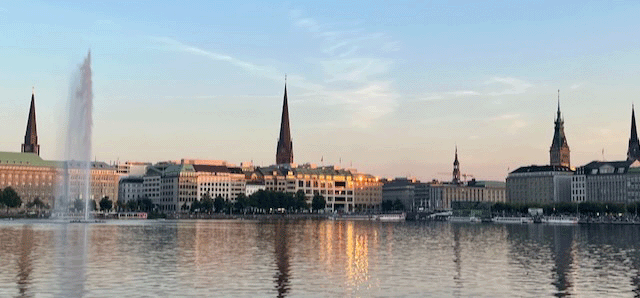Bletchley Park
February 5, 2024
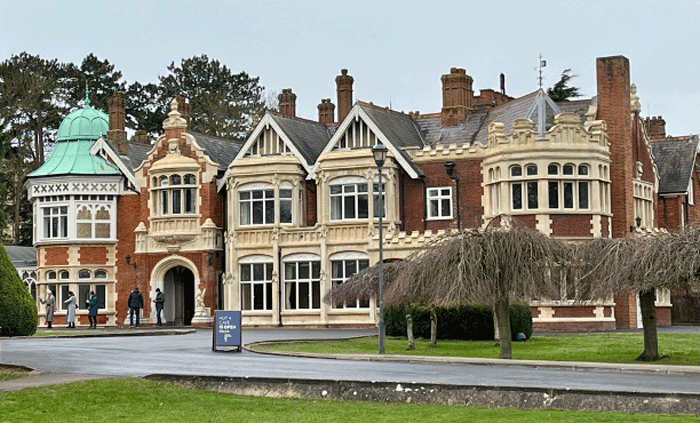
With all of the recent attention devoted to AI, I decided to visit a notable landmark on this London visit: Bletchley Park, where Alan Turing and his colleagues were able to break the German ‘Enigma’ codes in WWII. The estate is located about an hour’s train-ride north of London, and has two major sites: 1) the complex where, by the end of the war, nearly 9,000 people were working on cryptography and intelligence gathering; and 2) a separate National Museum of Computing, which claims to have “the world’s largest collection of working historic computers.”
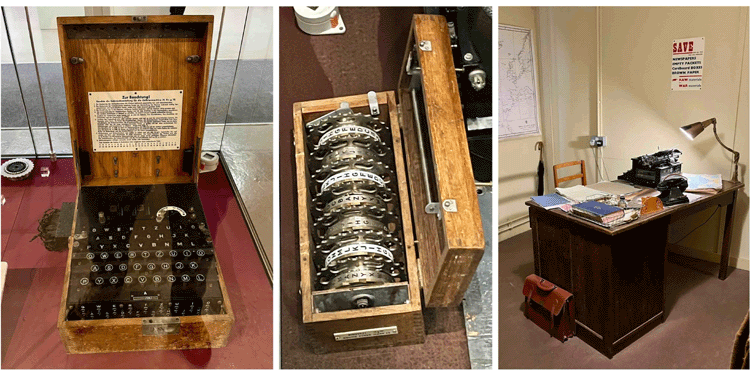
Both were quite fascinating. Anyone familiar with Alan Turing’s tragic story – a mathematical and technological genius driven to suicide because of his homosexual tendencies, despite having played a key role in enabling the Allies’ victory in WWII – will marvel at his actual accomplishments. The Enigma machines had six rotors, and scrambled messages accordingly. Turing laid out an approach in a “bombe” computer that could be used to determine the rotor settings – and thus decipher messages. Later in the war, strategic messages from the German headquarters were sent with an additional six rotors – and the British developed an even more powerful dedicated-purpose computer... the Colossus!
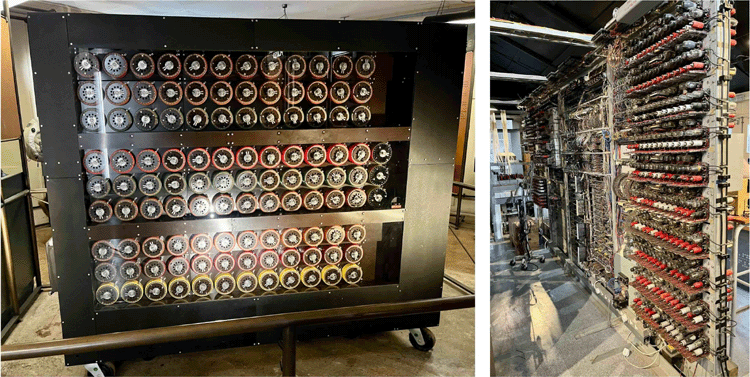
What is especially impressive about the Bletchley Park exhibits is that they have re-developed working versions of these machines…. and are thus able to show the exact tasks that people there were performing. It’s a fascinating example of human ingenuity – and dedication to a crucial cause.
Royal Institution
February 5, 2024
Last year’s visit to the U.K. focused on rock & roll – and I decided to get a bit more serious on this year’s return, on my way home from China. I arranged a personal scientific history tour with Laurence Scales, a knowledgeable guide who took me through the Royal Institution of Great Britain in Mayfair, and well as nearby historical sites in Soho.
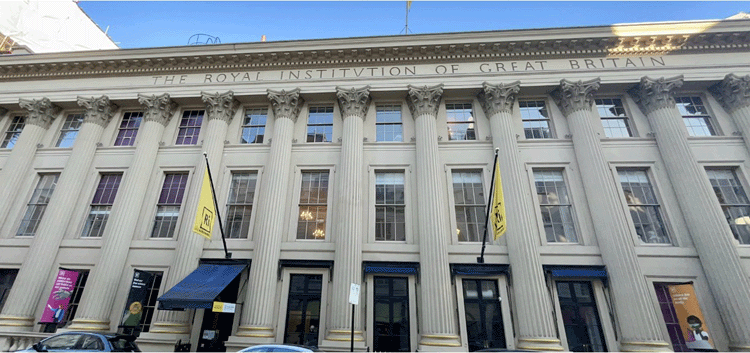
The Royal Institution (RI) was founded in 1799, with a mission a bit more practical than the better-known Royal Society – although its personnel were equally distinguished. Early leaders included the chemist Humphrey Davy (inventor of the Davy lamp); the electrochemist Michael Faraday; and – especially relevant today – the Irish physicist John Tyndall, often called the father of climate science, because of his determination of the absorptive capacities of individual gases in the atmosphere. [Tyndall met an unfortunate end when he was accidently (?) poisoned by his wife.]
By lucky happenstance, we were able to get into the laboratory of the Faraday Museum – still locked with the original key that Faraday used. Laurence also told me about another distinguished RI scientist that I didn’t originally recognize: Thomas Young. I did vaguely recall Young’s Modulus from my days as an engineering lab assistant in a materials science course back in the early 1970s…. but his description of this polymath led me to a fascinating book by Andrew Robinson, entitled The Last Man Who Knew Everything:Thomas Young.
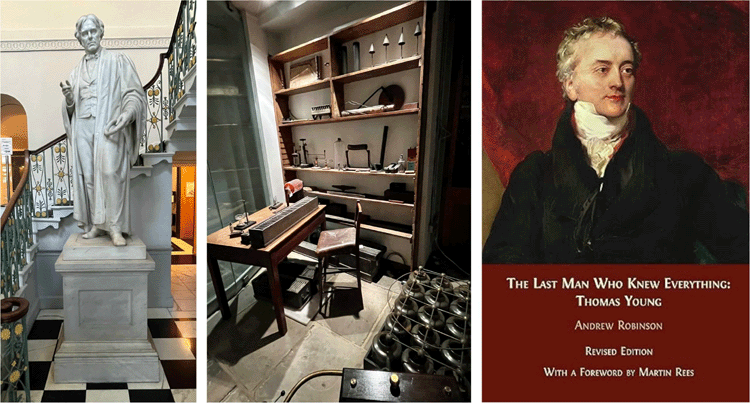
In addition to material science, Young had ground-breaking scientific ideas in optics, medical physiology, language theory, and – perhaps most surprisingly – Egyptian hieroglyphics. He was, however, a rather poor lecturer at the Royal Institution: since he knew everything, he apparently assumed that others did as well.
Battersea Power Station
February 5, 2024
When I was a young boy, I often traveled to London by train…. and knew I was getting close to Victoria Station when the train passed the iconic Battersea Power Station. Peter Watts begins his book about the power plant, Up in Smoke, describing exactly that same experience -- although the view is no longer available. Instead, it has been blocked by upscale condominiums, part of the re-development that occurred years after the power plant was closed.
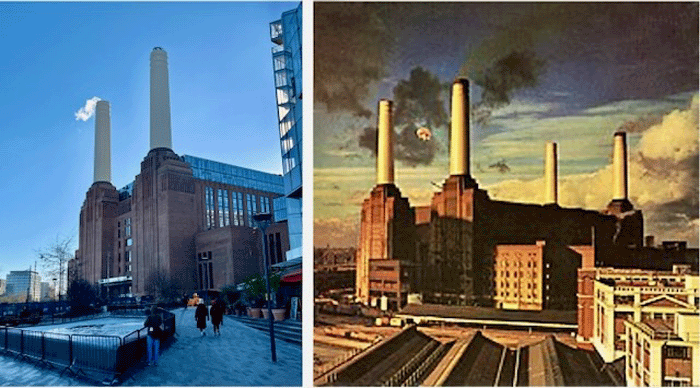
Cover design: Hipgnosis
Watts tells the story of that re-development, but truthfully I was much more interested in another part of its history. I discuss the power plant in my energy technology course, because it was the site of the very first flue gas desulfurization (FGD) system, utilizing Thames River water to remove acidic sulfur dioxide from the exhaust gas of its coal-fired units. This was not a comprehensive environmental solution, because the resulting liquid effluent was dumped back into the river – but it was a start.
Watts’ book was very informative, however, because I did not realize how important the FGD unit was in getting approval for building such a major coal-burning facility right in the middle of the city. That was close to the electrical load demand, but even then (early 1930s) citizens were concerned about the pollution. Similarly, as Watts notes, it had an effect on the iconic design:
For the [FGD] process to function, chimneys needed to be sited at either end of the flues, which ran the entire length of the building: this would eventually give Battersea Power Station its distinctive appearance.
Today the power plant houses an upscale shopping center in its turbine halls, and one can take an elevator up to the top of one of those iconic stacks on Lift 109. The power plant has played a key cultural role in numerous movies, and received special attention in 1977 when it appeared on the cover of Pink Floyd’s Animals album. That featured a pink pig flying between its stacks – although the pig unfortunately became untethered, disrupting air traffic and ending up in Kent.
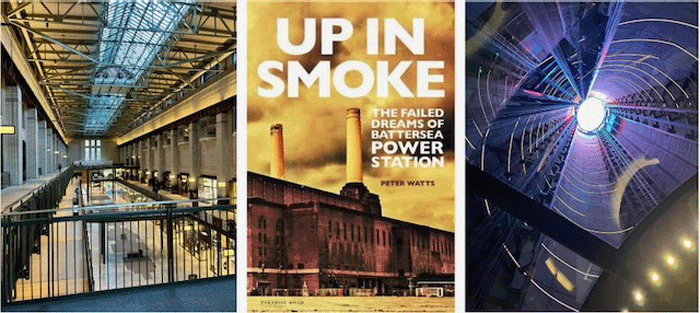
Li Bai
February 5, 2024
I’ve always thought that the person who best captured the spirit of traveling in China is Bill Porter (Chinese name ‘Red Pine’), who does translations of Chinese poems. His notable books include South of the Yangtze and Finding Them Gone, the latter getting its title from the frequent lament of Chinese poets who arrive at a long-sought destination to meet a colleague or friend, only to be disappointed.
One frequent subject of Porter’s books is Li Bai (or Li Pai or Li Po in Western translations), a famous poet from the Tang Dynasty whose poems are memorized by all Chinese school children. One particularly interesting Western tribute is Ezra Pound’s beautiful & touching The River-Merchant’s Wife: A Letter… a poem ‘after Li Po.’ Pound revolutionized modern poetry, and published a well-known collection Cathay dedicated to such translations….. even though Pound did not speak any Chinese! More recently, Li Bai was the subject of a 2019 biography from the National-Book-Award winning author Ha Jin.
There are two things likely to be found in any Li Bai poem: his love of drinking wine & spirits, and the moon. Not surprising, then, the legend of his passing links these topics: supposedly, Li was out in a boat on the Yangtze River, and saw a reflection of the moon on the water – and in his inebriated effort to capture it, fell overboard and drowned. The site of that drowning is memorialized at Caishiji Park in Ma’anshan, a city about 35 kilometers from Nanjing, and it’s long been on my “must-see” list – yet another China site visit disrupted by covid!
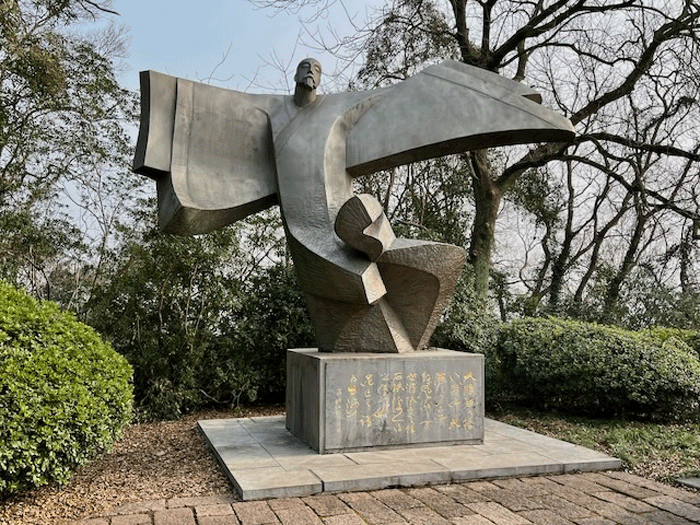
Luckily, an HNC law student in one of my ERE classes, Ms. Chen Junjie, was kind enough to take me there this semester, acting as a guide and helping me locate Qian Shaowu's well-known statue of Li Bai, showing him in flight as an immortal. We also headed to another site a further 20 kilometers away, the tomb where at least some of his remains are reportedly buried. That location had an aroma more like a distillery, however, as those paying homage – including Bill Porter and his colleagues – typically douse the tomb with liquid offerings.
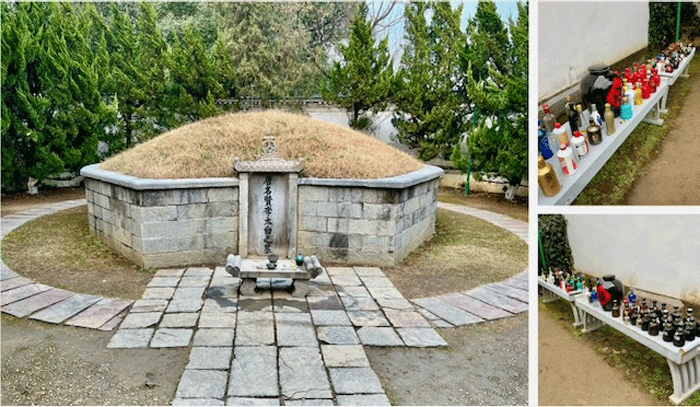
Hamburg
September 30, 2023
I came back to China via Europe, and stopped in to see my good friends Janosch & Jana – both Ph.D. environmental economists whom I’ve known for many years, and who have welcomed me on various vacation stays in Tuscany, Southern France, etc. They live in Buchholz, a town just south of Hamburg – and this was my chance to visit a city that I’m afraid I knew very little about…. other than that the Beatles had spent time and played there before becoming world famous.
Hamburg sits about a hundred kilometers from the North Sea on the Elbe River, and I had always thought of it as an in-land city – never realizing the importance of its port (in both historical and present-day terms). I had also never realized how lively and beautiful it is – with parks and old-time port buildings, modern architecture like the Elbphilharmonie, and a vibrant nightlife in the red-light Reeperbahn district (where the Beatles played in joints typical of a port city).
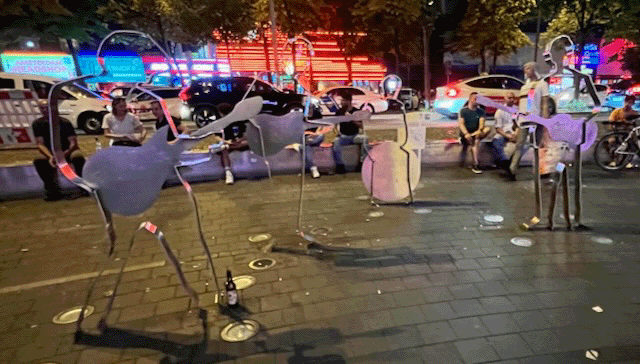
Following up on my recent London & Liverpool visit, we headed to Beatles-Platz one warm evening, to see the sights. It’s a bit difficult to capture and appreciate the ‘see-through’ Beatles statues in the photo above – as well as the fact that the black circular setting is shaped like a giant vinyl record. But the photo does give some indication that the Reeperbahn remains a lively place!
Other site visits included the city-center Binnenalster lake (with its notable fountain, seen in the initial photo above); the City Hall ‘Rathaus’; the former city wall area, now transformed into a scenic city park; the UN World Heritage Site historic port area; and the spire remains of the old St. Nicholas church – now a memorial of the city’s bombing in World War II.
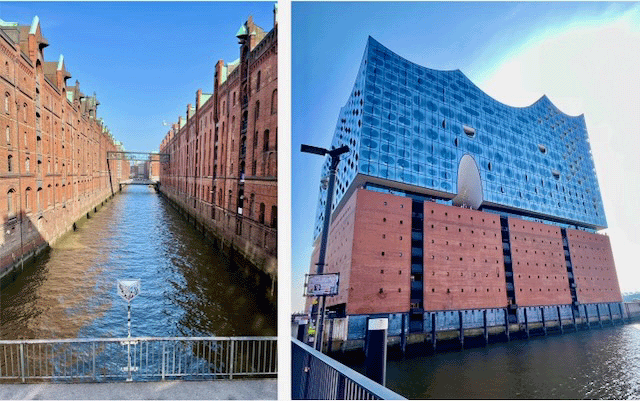
I was visiting Hamburg on my way to China, getting ready to teach my environmental course (over-subscribed, with 39 students signed up!) – and took along a very recent book, Dan Egan’s The Devil’s Element, about the worrisome pollutant phosphorus. Phosphorus is one of two pollutants (the other being nitrogen) that cause massive algal blooms in lakes and offshore areas around the world, and the element has become a major pollution concern. What I did not realize, however, was that Hamburg would play a major role in the book!
An early chapter in this fascinating work describes the discovery of phosphorus by the alchemist Hennig Brandt in the city in 1669. Brandt was a failed glass-maker who became a self-proclaimed Doctor (of both medicine & philosophy) – despite having no formal education. He isolated phosphorus with a recipe that involved boiling vats of urine, but was never able to take the ultimate desired step – to turn it into gold. It is extremely flammable, however, and can spontaneously ignite if exposed to air -- burning both equipment and any nearby flesh, making its production a very risky endeavor!
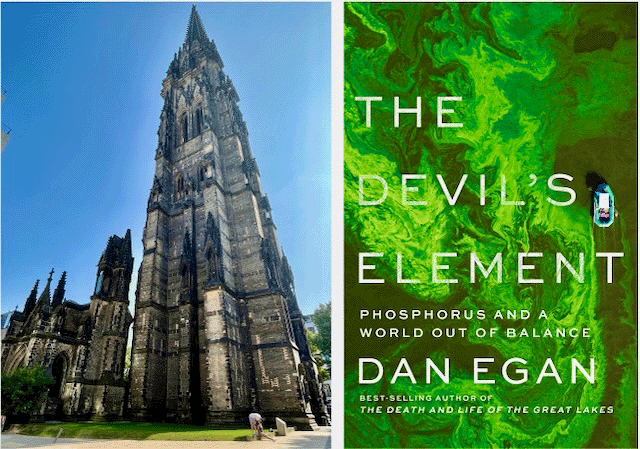
Such characteristics led to the story of that bombed-out church memorial. The Allies used phosphorus in their bombs, which were specifically designed to maximize the incendiary effects of such weapons. The death toll from Operation Gomorrah in Hamburg is not precise, since in some cases no bodies remained; it burned so hot that physicians weighed ashes to estimate the fatality rate (estimated at about 38,000 persons).
Egan’s book ends with a company building a state-of-the-art phosphorus recovery plant in the city, on the west bank of the Elbe River, to tackle this very necessary mineral – but also current environmental scourge. The devil’s element indeed!

